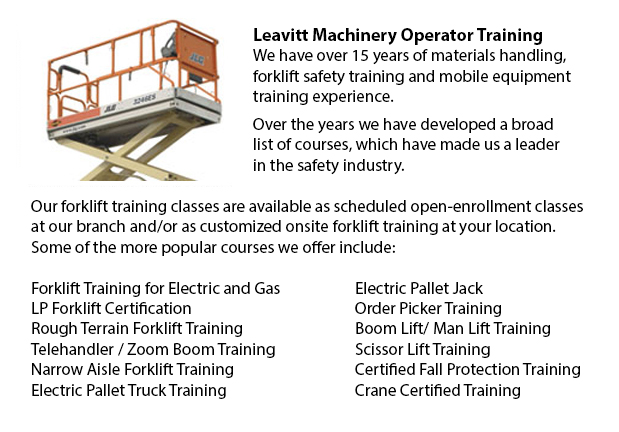
Mississauga Scissor Lift License - The operation of scissor lifts carries an inherent risk of danger. Whichever type of powered equipment requires proper handling to avoid accidents leading to damage or injury. Companies have to ensure that employees utilizing this particular machinery have the needed qualifications.
Untrained staff must not be allowed by their companies to make use of scissor lifts. The lift is made to raise people and materials to varied heights. Failure to know and fully abide by safety standard could result in damage to the lift or injuries for users.
There are no regulations governing the utilization of fall protection for those who use scissor lifts. However, manufacturers could suggest the use of fall protection and in several circumstances tying off in scissor lifts may be required by employer guidelines, local regulations or job-specific risk assessment.
To make sure that the scissor lift is in good working condition before using the equipment, the operator must carry out a thorough inspection. This is the operator's responsibility, even if the unit has already been in service that same day. The equipment's operator's instruction manual contains a checklist for pre-operation.
The things that an operator needs to look for when performing a scissor lift inspection, includes checking tire-inflation pressure, and checking platform controls and ground controls to make sure they are functioning. Look for any delayed movement on the fly section when the boom is extending and retracting since this can indicate some loose cables. When operating the controls, make certain that the emergency stop switches are working. Operate functions against the machine's cutout switches. Check the boom control system by cycling a boom lift to the furthest extent of its operating envelope. Safety limiters must stop the unit automatically before it moves into an unstable position, if they are working properly. If they aren't, shut down the lift and ensure that it is repaired before utilizing it again.
Safe operating procedures should be followed always, with the levers being operated with controlled, even pressure. A control lever should never be pushed from one position to the opposite position. The lever must be shifted to neutral, prior to stopping, and after that proceeding in the desired direction. When released, control switches and levers should return to the neutral position automatically. Depress the foot switch prior to operating platform controls.
-
Mississauga Crane Training Courses
Mississauga Crane Training Courses - The heavy equipment crane is intended to move, lift and lower heavy stuff. Normally, the crane comes outfitted along with a hoist, sheaves, and chains or wire ropes. Cranes are utilized in the manufacturing, const... More -
Mississauga Telehandler Ticket
Mississauga Telehandler Ticket - The telescopic handler or telehandler is a normally utilized machine in agricultural and industrial applications. This machine is the same in look to a forklift and even works in a similar way, even though telehandler... More -
Mississauga Overhead Crane Ticket
Mississauga Overhead Crane Ticket - An overhead crane is normally used in industrial environments. Likewise referred to as a bridge crane, this equipment includes parallel runways spanned by a traveling bridge. The component that lifts materials is t... More -
Mississauga Forklift Safety Training
Mississauga Forklift Safety Training - Any person who wants to operate a lift truck has to take a forklift safety training program in order to become a certified forklift truck operator. There are various ways to acquire forklift training. Courses ar... More -
Mississauga Heavy Equipment Training
Mississauga Heavy Equipment Training - Normally, the different kinds of heavy equipment training are divided into 2 categories of equipment: those that have rubber tires and tracked vehicles. Tracked vehicles include items such as excavators, cranes,... More -
Mississauga Loader Ticket
Mississauga Loader Ticket - Loaders have been created to operate practically anywhere. They offer optimal traction and maneuverability because of a heavy-duty oscillating joint which offers 45-degree rotating angles toward the left and right, with 10... More -
Mississauga Boom Lift Certification
Mississauga Boom Lift Certification - Elevated work platforms allow maintenance operations and work to be done at levels which can not be reached by whichever other means. Boom Lift Certification Training educates workers about safely operating boom... More -
Mississauga Forklift Training School
Mississauga Forklift Training School - Why A Forklift Operator Must Take A Forklift Training School - Federal and industry regulators have established the criteria for forklift safety training based on their existing standards and regulations. People... More

Forklift Certification Mississauga
TOLL FREE: 1-888-254-6157
Mississauga, Ontario
forkliftcertificationmississauga.com
Email Us
About Us


